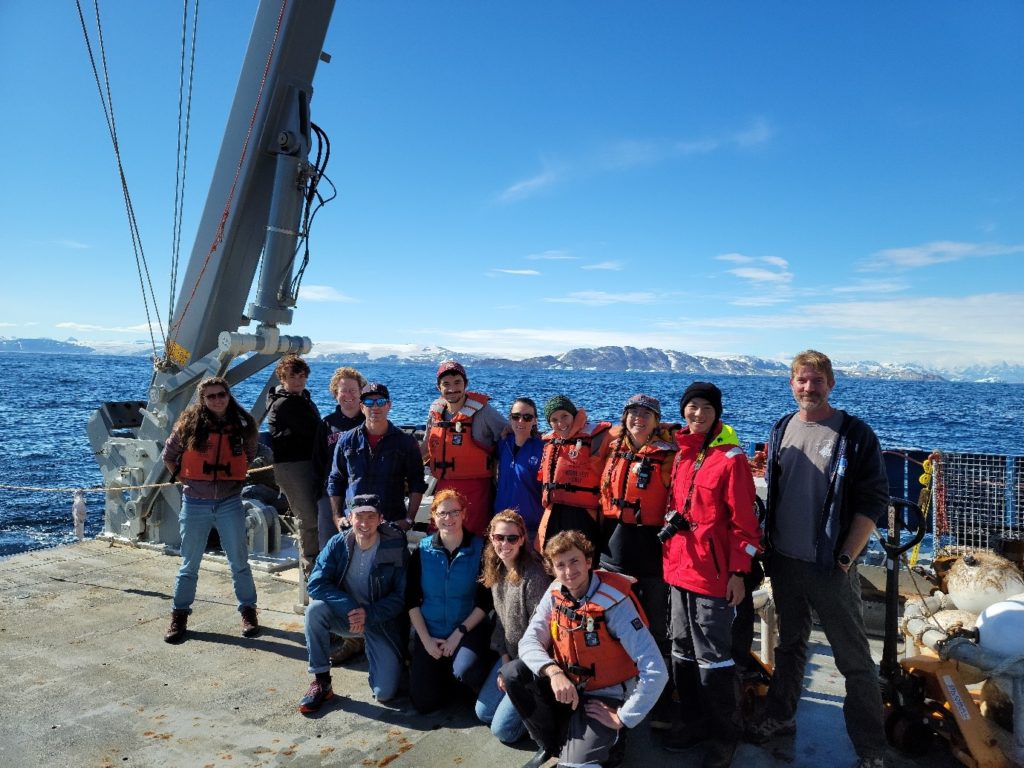
By Monica Nelson
Out in the Irminger Sea, our world is at once both very small and very expansive. Confined to R/V Neil Armstrong our world consists of the instrument-laden lab, the sea-spray-soaked deck, and the endless grey-blue ocean stretching for as far as the eye can see – or as far as the fog permits.
We’re here to monitor the beating heart of the ocean: Is it healthy? Is it behaving like it was two years ago, during its last check-up? We transited from Iceland to the east coast of Greenland and are now examining the coastal ocean, taking all sorts of measurements along the way. We take the ocean’s temperature to see how the ocean is regulating the Earth’s climate. We monitor the ocean’s breathing to see how the ocean is pumping oxygen into its depths. We fill vials of water samples to run in the lab back home to see what nutrients and carbon the ocean’s veins are transporting.
Over our five and a half weeks at sea we’ll be recovering and redeploying 20 moorings on the southeast and southwest tip of Greenland, holding over 100 instruments, that measure the ocean’s vitals in between our biannual visits.
We are the fifth and final OSNAP (Overturning in the Subpolar North Atlantic Project) cruise going out this summer, having left port a week after the German Karstensen cruise. This multinational effort monitors the variability of mass, heat and freshwater transport by the ocean. It’s a resource-intensive endeavor: we’re a science team of 17, plus two resident science technicians, and all the crew; we’ve got a boat load of specialized equipment and the whole procedure takes lot of time and money. The busy summer of OSNAP fieldwork continues!